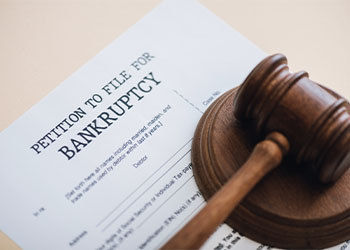Will Filing a Bankruptcy Prevent Me From Ever Having Credit Again?
Oct. 9, 2025
 When we think about bankruptcy, it’s natural to feel uncertain about the future. The word itself often carries a heavy weight, leaving us wondering whether we’ll ever be able to rebuild financially.
When we think about bankruptcy, it’s natural to feel uncertain about the future. The word itself often carries a heavy weight, leaving us wondering whether we’ll ever be able to rebuild financially.
One of the biggest fears many people share is the possibility of never being able to access credit again. Credit plays a role in so many aspects of our lives—from buying a car to applying for a mortgage—that the idea of losing it can feel overwhelming.
At Swindell & Associates, PC, we’ve worked with countless individuals and families in Amarillo, Texas, and throughout the Texas Panhandle who’ve asked this very question. The good news is that filing for bankruptcy doesn’t mean permanent financial exile.
Credit can be rebuilt, and opportunities for financial stability remain very real. Let’s take a closer look at why bankruptcy doesn’t shut the door on credit and how the rebuilding process works.
What Bankruptcy Really Means for Credit
When we file for bankruptcy, it shows up on our credit report as a major financial event. That fact alone can sound discouraging, but it’s not a permanent label.
A bankruptcy will remain on a credit report for a period of time—typically seven to ten years, depending on the type of filing. However, lenders don’t automatically dismiss applicants with a bankruptcy on record. Many creditors know that after a filing, we’re actually in a stronger position to repay new debt because past obligations have been discharged or reorganized.
Instead of thinking about bankruptcy as the end of credit, we should see it as a reset. It wipes the slate clean in many respects, allowing us to focus on rebuilding responsibly.
How Rebuilding Credit Works After Bankruptcy
Once the bankruptcy process is complete, the rebuilding phase begins. It requires patience and consistent effort, but progress is not only possible—it’s expected.
Here are some strategies we can use to move forward:
Secured credit cards: These require a deposit that acts as collateral. Using them responsibly and paying off balances on time helps establish a positive credit history.
Credit-builder loans: Some banks and credit unions offer small loans where the borrowed money is held in a savings account until the loan is repaid, helping us demonstrate payment reliability.
Timely bill payments: Paying utilities, rent, or other obligations on time contributes to rebuilding trust with lenders.
Each step not only rebuilds our score but also re-establishes our financial confidence. Over time, these consistent actions create a strong foundation for long-term stability.
How Lenders View Us After Bankruptcy
Another key piece of the puzzle is understanding how lenders see us after bankruptcy. They don’t just look at the fact that we filed—they also evaluate what we’ve done since.
Lenders consider factors such as:
Consistent income: Showing stable employment reassures creditors of our repayment ability.
Debt-to-income ratio: A lower ratio indicates that we aren’t overextended and can handle new obligations.
Responsible use of new credit: Even a small secured card balance paid in full every month demonstrates reliability.
By focusing on these areas, we can gradually shift how lenders view us, proving that bankruptcy was a turning point rather than a permanent limitation.
The Basics of Time in Rebuilding Credit
Time plays one of the most important roles in recovering from bankruptcy. Initially, access to credit may be limited, but as months and years pass, opportunities expand.
Generally, we see three phases:
The immediate period after discharge: This is when offers may be limited to secured cards or loans with higher interest rates.
Two to four years after filing: By consistently making on-time payments, many of us can qualify for auto loans, personal loans, or even small unsecured credit cards.
Five years and beyond: At this stage, some people may even qualify for mortgages, provided they’ve rebuilt responsibly.
These phases confirm that bankruptcy is not a permanent barrier. Instead, it marks the beginning of a process that rewards patience and persistence.
Everyday Habits That Support Credit Recovery
Rebuilding credit doesn’t only happen through new loans or cards—it’s also about adopting daily habits that support financial health. Some of these include:
Creating a budget: Tracking income and expenses helps us avoid falling into the same debt patterns.
Setting up automatic payments: This makes sure bills are never late, reinforcing positive payment history.
Keeping credit utilization low: Using only a small percentage of available credit signals to lenders that we’re managing debt wisely.
Saving for emergencies: Even a modest savings account can prevent us from relying on high-interest credit during financial strain.
By sticking to these habits, we’re building a foundation that supports long-term stability. Over time, these practices not only strengthen our financial resilience but also make future credit opportunities more accessible.
Bankruptcy Myths and Credit Realities
We’ve all heard the myths that surround bankruptcy. One of the most common is that it will “ruin our lives forever” or that we’ll “never have credit again.” But reality tells a different story.
Myth: Bankruptcy eliminates any chance of credit.
Reality: Credit is often available within months, though terms may be limited at first.Myth: Employers will always see bankruptcy negatively.
Reality: While some employers check credit, many focus more on employment history and job performance.Myth: Bankruptcy shows irresponsibility.
Reality: Many people file because of medical bills, job loss, or other circumstances beyond their control. Filing is often a responsible choice to regain stability.
By separating fact from myth, we can move forward with confidence instead of fear. With a clearer understanding of reality, we’re better prepared to focus on the positive steps that rebuild credit and restore financial stability.
Why Rebuilding Credit Matters Beyond Loans
Rebuilding after bankruptcy isn’t just about qualifying for credit cards or mortgages. Strong credit impacts other parts of our lives:
Housing: Landlords often review credit reports before approving rental applications.
Employment opportunities: Some employers run credit checks for positions involving financial responsibility.
Insurance premiums: Better credit can sometimes lead to lower rates.
Peace of mind: Knowing we can handle unexpected expenses without fear of rejection strengthens overall well-being.
These benefits remind us that the effort we put into rebuilding extends far beyond access to borrowing. By recognizing how credit influences so many areas of daily life, we can stay motivated to continue building healthier financial habits.
Bankruptcy as a Turning Point, Not an Ending
When we look at the full picture, bankruptcy should be seen less as an ending and more as a new beginning. It gives us the chance to stop the cycle of unmanageable debt and create healthier financial habits.
Instead of worrying that bankruptcy means we’ll never have credit again, we can focus on the opportunities it creates for recovery. Credit can be rebuilt, and in many cases, people find themselves in a stronger financial position years after filing than they ever were before.
Legal Bankruptcy Counsel
Filing for bankruptcy doesn’t mean the end of your financial life. With time, discipline, and the right strategies, credit can absolutely be rebuilt.
If you’re in Amarillo or anywhere in the Texas Panhandle, including Borger, Pampa, Hereford, and Dumas, Texas, and are considering bankruptcy or have questions about your financial future, our attorneys at Swindell & Associates, PC can guide you through your options. Our firm is here to support you as you take steps toward financial stability. Contact us today to get started.
